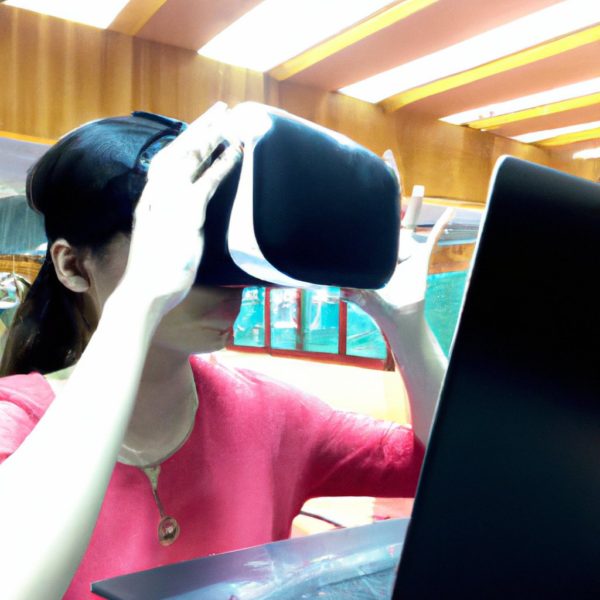
Between the 1990’s and today, education establishments, and our classrooms, have evolved into places where the use of web pages, internet databases, and interactive online tools, including social media, have become a part of the furniture so to speak! In my view, virtual reality is the next best use of the internet for the classroom and for education establishments! Much like the students of today expect and demand online learning experiences, so too will the learners of tomorrow (which is not that far away) have an expectation for education establishments to provide them a 3D virtual learning experiences.
The Immersive Experience
With the help of VR technology, students can currently have immersive and interactive experiences that can enhance their understanding and retention of complex concepts. It can provide students with access to resources and simulations that they wouldn’t be able to experience otherwise. By immersing students in simulated settings, VR provides an engaging and interactive learning experience and enables students to gain a better understanding of complex concepts – in effect, it helps bridge the gap between theory and practice,
Complementing Instruction With VR
Virtual reality can complement student studies in several ways:
Hands-on learning: VR provides students with a hands-on, interactive experience that can help them better understand and retain complex concepts. For example, students can explore a virtual environment to learn about anatomy or chemistry.
Immersive simulations: VR simulations can allow students to experience real-world scenarios in a safe, controlled environment. This can be especially useful in fields such as medicine, engineering, and architecture, where hands-on experience is essential.
Access to remote resources: With VR, students can access resources from anywhere in the world, such as virtual museum tours or virtual field trips.
Skill development: VR can provide opportunities for students to develop important skills such as teamwork, problem-solving, and critical thinking.
Increased engagement: VR can increase student engagement and motivation, leading to a more positive learning experience.
The Digital Twin
Higher education establishments must prepare to embrace Virtual Reality not only as a method of instruction, but also as a way to provide educational services. The campus setting that was built for the boomer generation (the largest generation), has become antiquated and expensive to maintain. The campus setting services a declining population today yet the learner needs of the post covid pandemic are much different than what our institutions were designed for. By the creation of a digital twin (a digital 3D copy of the physical campus) student services may be provided in real time, cost effectively, in a 3D environment – as and when needed.
Metaversities
There are currently 10 Universities in the US that have already built their “digital twin”, also known as Metaversities. They are: Morehouse College in Georgia, the University of Kansas School of Nursing, New Mexico State University, South Dakota State University, Florida A&M University, West Virginia University, Southwestern Oregon Community College, California State University, Alabama A&M University and University of Maryland. They have been planning for students to visit their virtual campus from anywhere. Read more about that here! https://www.govtech.com/education/higher-ed/10-universities-to-launch-digital-twin-metaversities
So, is virtual reality a threat to higher education establishments?
More to come 🙂